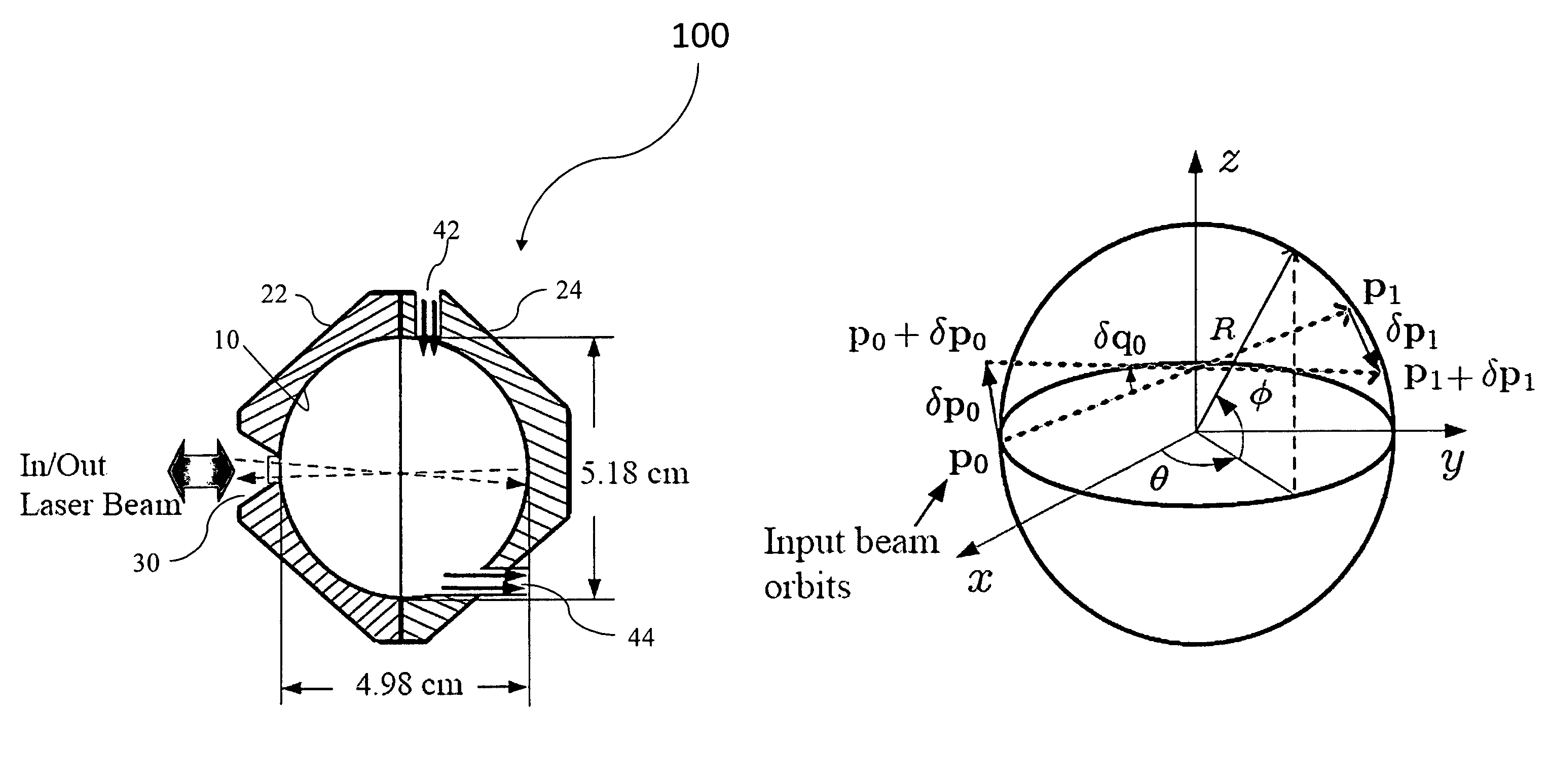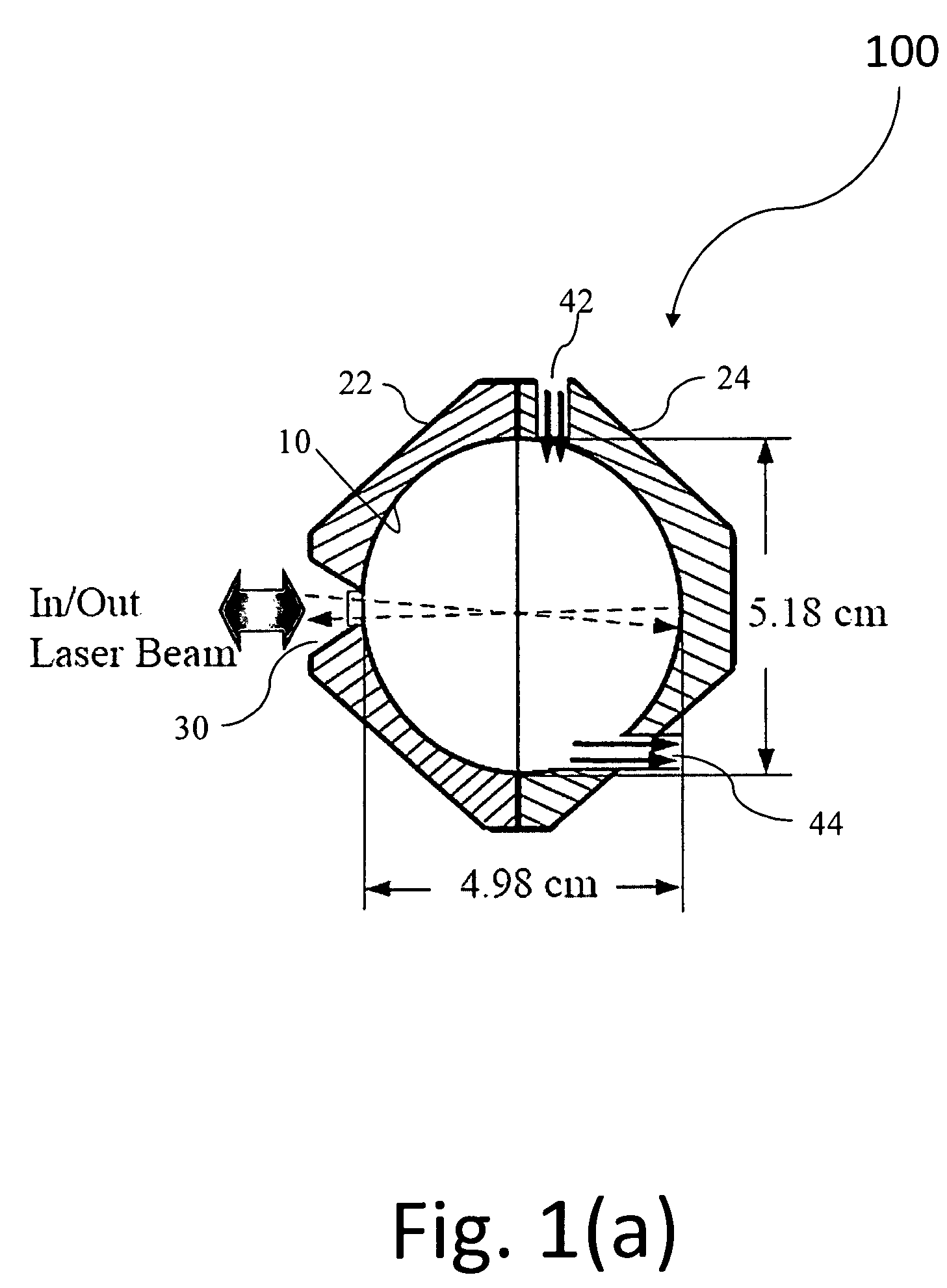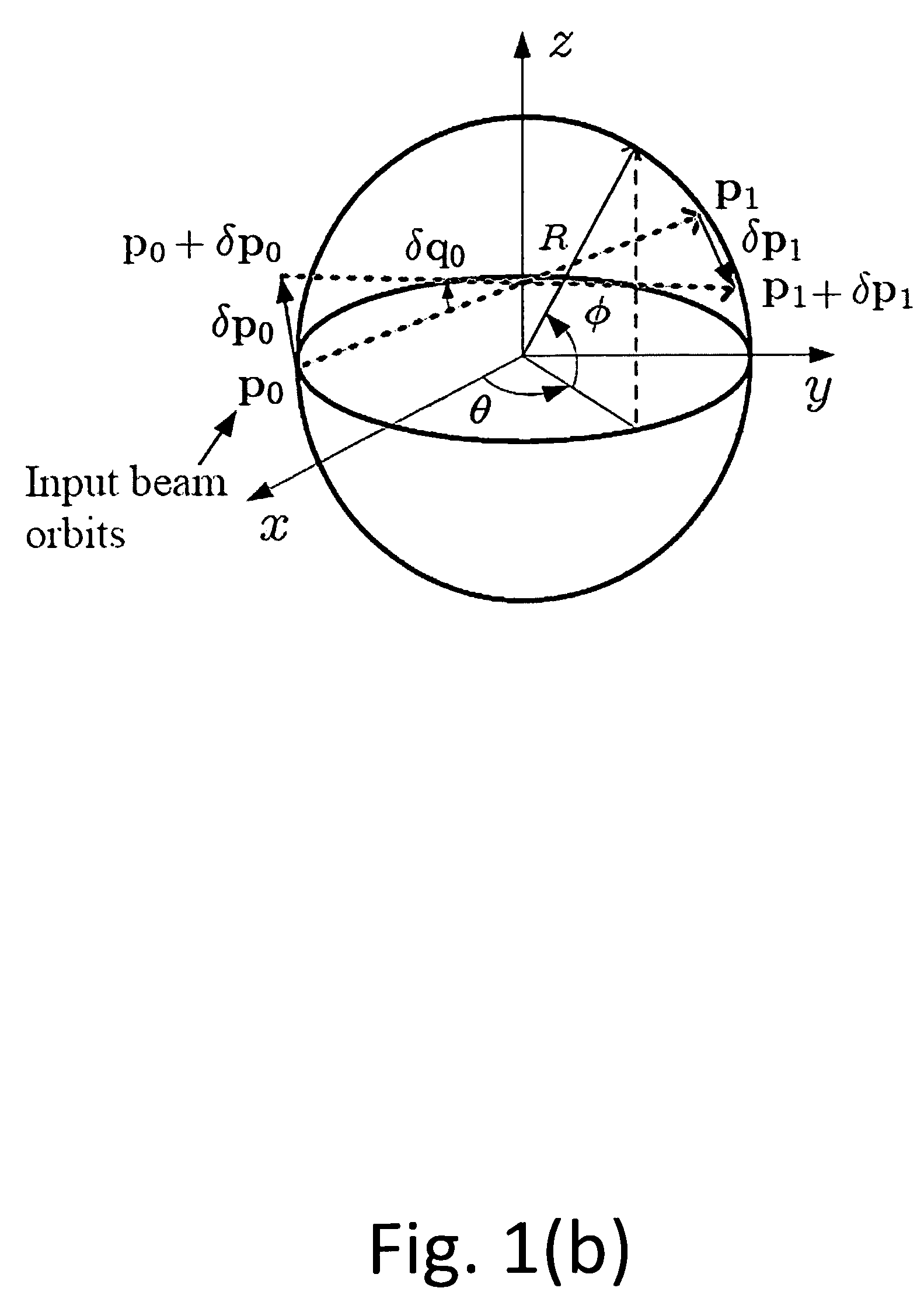Rotationally asymmetric chaotic optical multi-pass cavity
a multi-pass cavity, asymmetric technology, applied in the direction of optical radiation measurement, instruments, spectrometry/spectrophotometry/monochromators, etc., can solve the problem of invulnerability of high-condensity rigid cell structure, achieve high mechanical/temperature stability, facilitate manufacturing process, and simple structure
- Summary
- Abstract
- Description
- Claims
- Application Information
AI Technical Summary
Benefits of technology
Problems solved by technology
Method used
Image
Examples
examples
[0053]The utility of the rotationally asymmetric chaotic multi-pass cavity 100 in accordance with the present invention was demonstrated experimentally. For this first example, the chaotic multi-pass cavity 100 was fabricated from a copper substrate with R0=2.54 cm, εxy=0.01, and εyz=0.02. The cavity 100 consisted of two half shells 22, 24 shaped by a traditional milling process, which had a manufacturing accuracy of about 5.1 μm in the cavity radius. Afterwards, a Ti / Au (300 / 3000 Å) coating was deposited onto the inner polished cavity surface 10 by e-beam evaporation. Two such shells 22, 24 were manufactured and fastened to each other permanently to yield the structure illustrated in FIG. 1(a). A 2 mm diameter aperture was drilled at the front cavity shell 22 to provide the optical port 30 for light to be coupled in and out. The gas inlet and outlet ports 42, 44 were located at the top and bottom ends of the cavity 100 so that the ports 42, 44 did not interfere with the circulating...
PUM
| Property | Measurement | Unit |
|---|---|---|
| path length | aaaaa | aaaaa |
| path length | aaaaa | aaaaa |
| volume | aaaaa | aaaaa |
Abstract
Description
Claims
Application Information
 Login to View More
Login to View More - R&D
- Intellectual Property
- Life Sciences
- Materials
- Tech Scout
- Unparalleled Data Quality
- Higher Quality Content
- 60% Fewer Hallucinations
Browse by: Latest US Patents, China's latest patents, Technical Efficacy Thesaurus, Application Domain, Technology Topic, Popular Technical Reports.
© 2025 PatSnap. All rights reserved.Legal|Privacy policy|Modern Slavery Act Transparency Statement|Sitemap|About US| Contact US: help@patsnap.com



